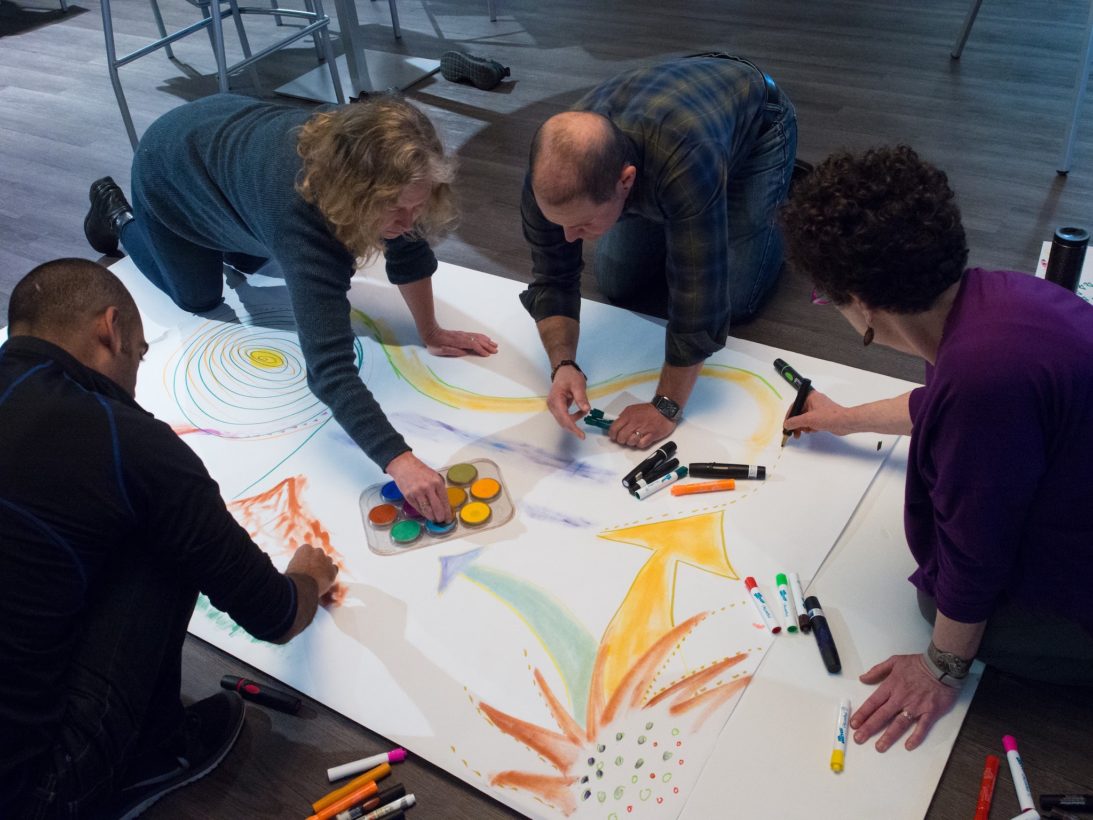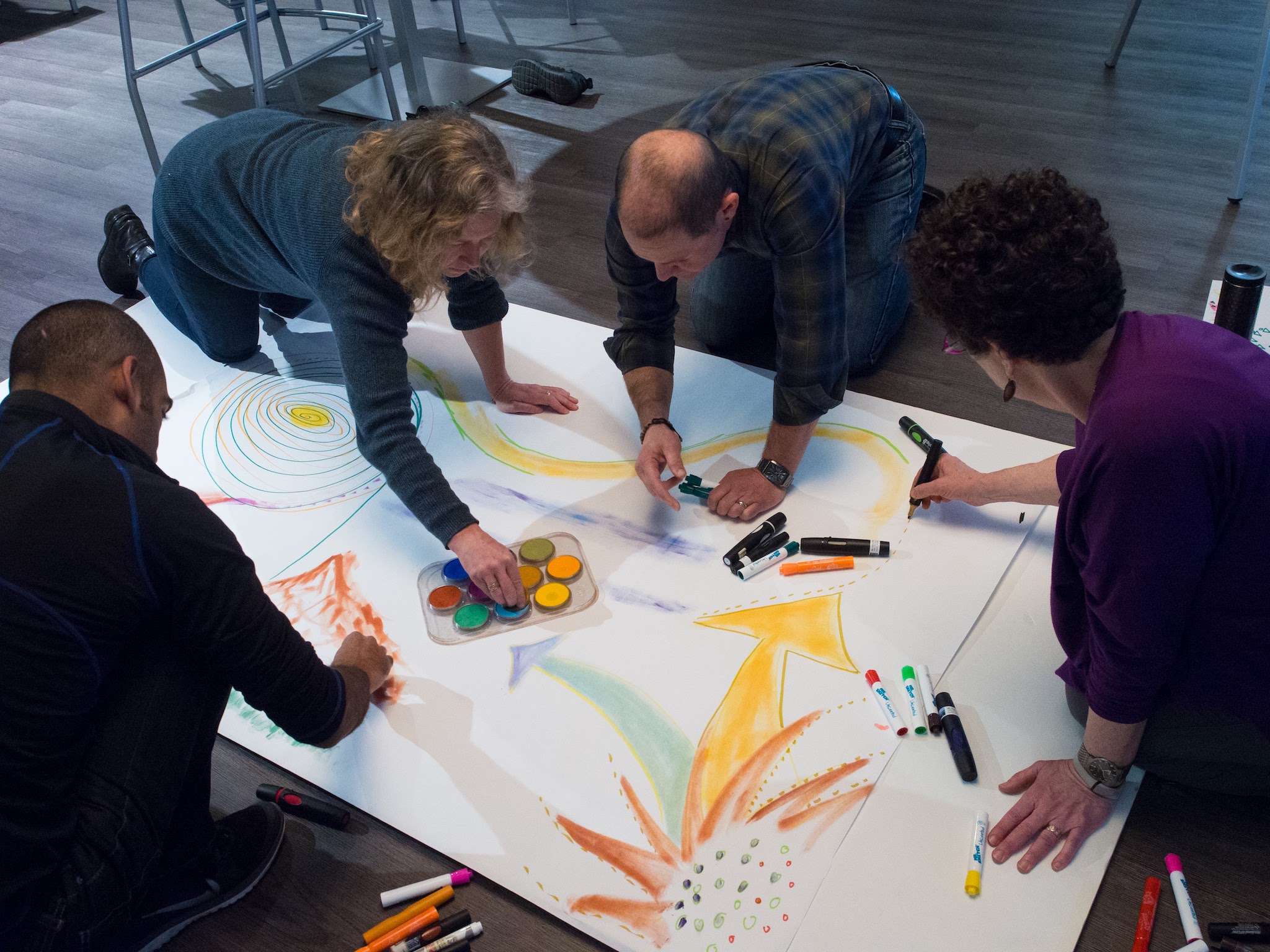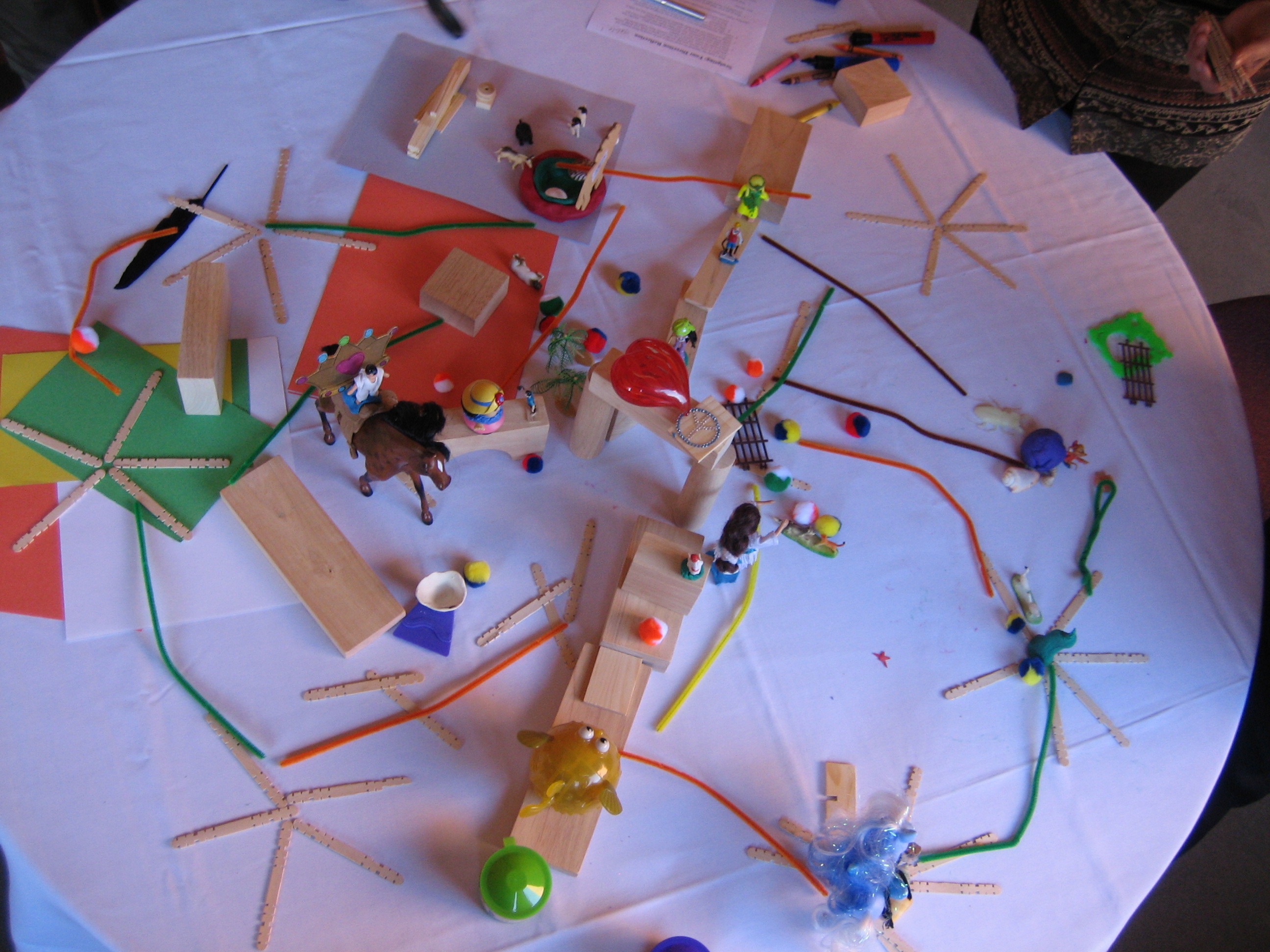

Earlier this year, I announced that I wanted to build a more formal network of collaboration practitioners. I wrote:
It’s always been an important part of my strategy, and it feels like the right moment to prioritize it.
I also want to be open and transparent about how I’m trying to do it in order to model network principles. As the field has professionalized, I’ve felt a narrowness in how many practitioners interpret and practice network principles. I want to offer a counter to this.
In subsequent blog posts, I shared what I had learned from previous experiences. In my first case study, I pulled out the following principles:
- Be clear about what you want
- Avoid premature and unnecessary structure
- Assume abundance!
In my second case study, I pulled out a few more principles:
- Be selfish, but in a networked way
- Frequent collisions
- Networks are about relationships
In this post, I want to offer a few more driving principles and outline how I’m currently thinking about pulling this all together.
Inspired by Alcoholics Anonymous
In addition to my previous work, one of my biggest inspirations for how I want to design this is Alcoholics Anonymous (A.A.). A.A. is a global, open, decentralized, self-organizing network that emphasizes pair relationships and peer support, and it has helped thousands of people over the years, including a few whom I know. The core of its program is its 12 steps, the first step of which is admitting you have a problem. Anyone can start an A.A. support group. It simply requires “the need for one as expressed by at least two or three alcoholics; the cooperation of other A.A. members; a meeting place; a coffeepot; A.A. literature and meeting lists; and other supplies.”
I love how open, clear, and simple the platform is. There are formal structures to help keep this all organized, but the basic model is to encourage motivated people to take action. Furthermore, there is a deeply embedded culture of support and practice. This is not dictated by the structure, but it’s reinforced by it. The structures themselves are simple, even though the work of living with addiction is not.
I’ve always been taken by A.A.’s model and results. I also think that what many collaboration practitioners (including me) need amounts to self-help. Most of us are not working in structures that are conducive to our work. Many of us are not doing this work as part of our official roles within our groups, which means it often comes on our own time, and the work is often unseen and undervalued. When structure and culture is working against you, it’s even more contingent for you to maintain disciplined habits and to find support where you can.
I think a lot of collaboration practitioners already find ways to do this on our own, especially the peer support part. However, I think our default culture prevents us from truly getting what we want. I think we generally don’t ask for as much time as we need (and that others would happily provide, because it would benefit them too), and I think we’re generally not as open or transparent about what we’re learning as we could be.
What I Want
I want to create a support group for collaboration practitioners focused on developing and maintaining good habits, the kinds of habits that will not only make us better practitioners, but also enable us to live happy, healthy, sane lives. (These two things are inextricably intertwingled in my opinion.)
I want us to be focused on depth over breadth — deep practice, deep sharing, deep relationships. I want all of us to have a sense of what’s going on with each other professionally and personally. I want there to be enough trust and shared understanding and language that we all feel comfortable throwing around crazy ideas or asking for help. I would love to see participants collaborate, but only when it’s compelling. I’m not interested in collaboration for collaboration’s sake.
I want it to be an open group, but I also want it to feel intimate. I assume this means that it needs to be small, which may require limiting the size of the group, but I don’t know what the limit should be or whether this assumption is even true. I want participants to share what they learn from each other more broadly while also being thoughtful and respectful of people’s privacy and safety.
In other words, I don’t just want this to be a group of folks we already know and are comfortable with. I want to see diversity in as many dimensions as possible — age, gender, race, job, etc. This suggests paying particular attention to diversity and mobility (people moving in and out) with the initial group and letting it evolve from there.
I want participants to feel ownership and agency over their experience in the group. I want it to be leaderful and bold.
Finally, I want to create structures and practices that are easily replicable and customizable, I want to invest in the culture and capacities that can lead to success, and I want to share everything that I learn in the process. I’d love to see many, many, many groups copy what we do, customizing it as they see fit, and openly and frequently sharing what they learn so that we all may benefit. These groups could share a common “brand” or identity, like A.A., but it’s not that important to me. What matters more is that these types of spaces for collaboration practitioners to support each other are abundant.
Design Sketch
Given all of the above, here’s what I’m thinking (and have already started to experiment with). The group (as yet unnamed) would be centered around supporting each other with these Habits of Effective Collaboration Practitioners:
- Admit you are a collaboration practitioner.
- Breathe.
- Start with you.
- Listen and understand others.
- Be intentional, and hold it lightly.
- Stretch, but don't hurt yourself.
- Be compassionate.
- Do the work.
- Pick yourself up.
- Celebrate!
- Reflect and integrate.
- Share!
- Repeat.
Most practitioners already do some subset of these regularly. Our goal would be to support each other in doing all of them, which would help all of us become better practitioners and people. (I’ll blog more about this list later, as I’m still eliciting feedback and making changes. I’d love to hear your reactions in the comments section below. Many thanks to Anya Kandel, Travis Kriplean, Eun-Joung Lee, Danny Spitzberg, Matt Thompson, and Kate Wing for providing early feedback.)
Everyone participating would go through an on-boarding process that would include reviewing these habits and talking one-on-one with at least two current participants. This would help people feel more welcome, and it would remind everyone that networks are fundamentally about people and relationships and that we encourage people to forge their own individual connections beyond the platform.
Beyond the on-boarding, there would be only one required activity (which would take place on a Slack instance set up for this group) — checking in every week. The checkin could be brief, and the prompt could change over time, but the basic idea is that everyone would share what was going on in their work and lives at least once a week.
This simple practice would accomplish several things:
- Make it clear whether you’re in or out. (More on this below.)
- Help people learn how to use and get comfortable with the platform
- Build community and relationships through frequent, but lightweight engagement
- Establish a rhythm that makes the community and the space feel alive
- Support participants in developing core collaboration and network muscles, especially our Sharing muscles.
I want to make it both simple and clear to delineate between those participating in this network and those who are not. If you’re willing to go through the on-boarding, agree to some basic community agreements, and check in regularly, you’re welcome to participate. I also want to make it okay not to participate. This structure may not feel right for some, or it may not be the right group of people, or it may be asking for too much time. Just because you’re not participating in this particular network doesn’t mean you can’t (or don’t) have a relationship with me or other participants. If you stop participating for whatever reason, that’s okay too, and you’d be welcome to return by just going through the on-boarding again.
I’m also making a bet about our Sharing muscles. When it comes to sharing, most of the practitioners I’ve met default to sharing only when they’re face-to-face with others and in larger, more "finished" chunks. There’s nothing wrong with this. However, many of the interesting and desirable things that sometimes emerge from networks require more frequent and open sharing. Rather than hoping this happens organically, I want to actively cultivate this muscle by encouraging participants to share rough little tidbits about their work and their thinking more frequently. My hope is that developing this one keystone habit will help unlock all sorts of other desirable muscles and mindsets — pausing, working iteratively, comfort sharing rough work, vulnerability, celebration, etc. — which will both help all of us individually as practitioners and the network as a whole.
Finally, I want to encourage (but not require) participants to find a regular checkin partner, similar to my experiences with Kate Wing over the past five years.
I’ve been experimenting with some of these ideas and structures over the past year, and I’m looking forward to taking another step forward. (Many thanks to Cherine Badawi, Shirley Huey, Anya Kandel, Travis Kriplean, Adene Sacks, and Zoe Tamaki for playing.) I have lots of open questions, and I’m looking forward to exploring these.
I’m not ready to open it up to everyone just yet. I want to be really intentional about establishing the culture and practices with a core group, and I want to make sure that we have a good balance of emerging and experienced practitioners. That said, if you think you might want to play, please either leave a comment below or send me an email directly. If you want to try to start your own group stealing any or all of this, please do, and please let me know, as I’d love to learn from your experiences! Finally, if you have any other thoughts on any of this, please leave a comment below. This is a work-in-progress, and I’m looking forward to continuing to share what I learn.
This is the last in a series of blog posts about building a network of collaboration practitioners. The others are:
- Building a Network of Collaboration Practitioners (February 7, 2019)
- A Personal Case Study in Network-Building: Pre-IPO (February 20, 2019)
- A Personal Case Study in Network-Building: Selfishness, Frequent Collisions, and my Colearning Experiment (May 7, 2019)
- What We Learned from Five Years of Check-ins (May 14, 2019)


